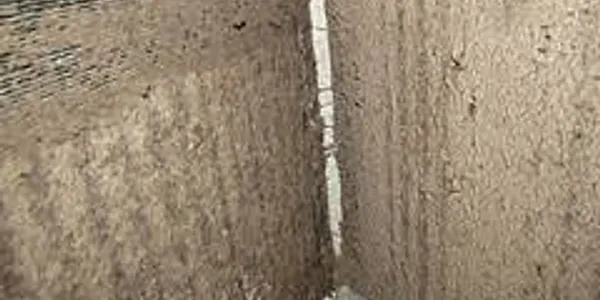By: Inspection Time | Aaron Davis CMI Trec#25498 | Professional Home Inspector

When it comes to maintaining your HVAC system, one often overlooked component is the primary condensation line. This line is responsible for draining away the moisture that your air conditioning system removes from the air. To ensure its efficiency and longevity, it’s crucial to insulate or wrap the condensation line properly. In this blog post, we’ll explore why insulation is necessary, the potential risks of neglecting this step, and how to maintain your condensation line effectively.
Why Insulating the Primary Condensation Line is Necessary
- Prevent Freezing:
- Cold Climates: In colder climates, the condensation line can freeze, causing blockages and preventing proper drainage. Insulation helps keep the line above freezing temperatures, ensuring the condensate flows freely.
- Reduce Condensation:
- Prevent Water Damage: Insulation minimizes the formation of condensation on the exterior of the line, which can drip and cause water damage to your home’s structure, walls, and floors.
- Prevent Mold Growth: Excess moisture from condensation can lead to mold and mildew growth, posing health risks and damaging your property.
- Improve HVAC Efficiency:
- Energy Efficiency: Insulated condensation lines help maintain the temperature of the condensate, which can improve the overall efficiency of your HVAC system. This can lead to reduced energy consumption and lower utility bills.
- System Longevity: By preventing moisture-related issues, insulation can extend the lifespan of your HVAC system, reducing the need for frequent repairs and replacements.
Risks of Not Insulating the Condensation Line
- Water Damage:
- Structural Damage: Uninsulated condensation lines can cause water to drip and accumulate, leading to damage to your home’s structure, including walls, floors, and ceilings.
- Interior Damage: Water damage can also affect interior finishes, such as paint, wallpaper, and flooring, leading to costly repairs.
- Mold and Mildew Growth:
- Health Risks: Moist environments are ideal for mold and mildew growth, which can cause respiratory issues, allergies, and other health problems for occupants.
- Property Damage: Mold and mildew can spread quickly, damaging building materials and requiring expensive remediation efforts.
- HVAC System Inefficiency:
- Reduced Performance: A condensation line that frequently clogs or freezes can impair the performance of your HVAC system, making it work harder to cool your home.
- Increased Energy Costs: An inefficient HVAC system consumes more energy, leading to higher utility bills and unnecessary wear and tear on the system.
How to Properly Insulate Your Condensation Line
- Choose the Right Insulation Material:
- Foam Pipe Insulation: Foam pipe insulation is a common choice for wrapping condensation lines. It is easy to install and provides effective thermal insulation.
- Rubber Pipe Insulation: Rubber insulation is another good option, offering flexibility and durability, especially in environments with fluctuating temperatures.
- Proper Installation:
- Measure and Cut: Measure the length of the condensation line and cut the insulation to the appropriate length. Ensure a snug fit to maximize the insulation’s effectiveness.
- Seal Joints: Use appropriate tape or adhesive to seal any joints or seams in the insulation to prevent moisture ingress and ensure continuous insulation coverage.
- Secure Insulation: Use cable ties or clips to secure the insulation in place, preventing it from slipping or becoming dislodged over time.
- Regular Maintenance:
- Inspect Insulation: Periodically check the insulation for signs of wear, damage, or displacement. Replace or repair any damaged sections to maintain optimal performance.
- Clean the Line: Regularly clean the condensation line to prevent clogs and ensure proper drainage. This can be done by flushing the line with a mixture of water and bleach or using specialized cleaning solutions.
Conclusion
Insulating your primary condensation line is a simple yet crucial step in maintaining the efficiency and longevity of your HVAC system. By preventing freezing, reducing condensation, and improving system efficiency, insulation protects your home from water damage, mold growth, and increased energy costs. Ensuring your condensation line is properly insulated and maintained will save you from costly repairs and keep your home comfortable and safe.
Hashtags and Keywords
Hashtags: #HVACMaintenance #CondensationLine #HomeMaintenance #EnergyEfficiency #MoldPrevention #WaterDamagePrevention #HomeImprovement #IndoorAirQuality #PipeInsulation #ACMaintenance
Keywords: primary condensation line insulation, condensation line pipe wrap, HVAC maintenance, home maintenance, energy efficiency, mold prevention, water damage prevention, home improvement, indoor air quality, pipe insulation, AC maintenance
By understanding the importance of insulating your primary condensation line and taking the necessary steps to ensure its proper installation and maintenance, you can protect your home and enhance the performance of your HVAC system.




